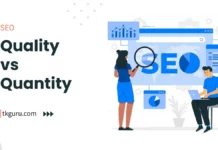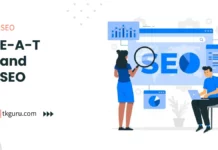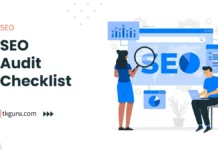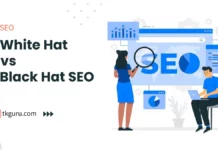Advertisements
Ratings
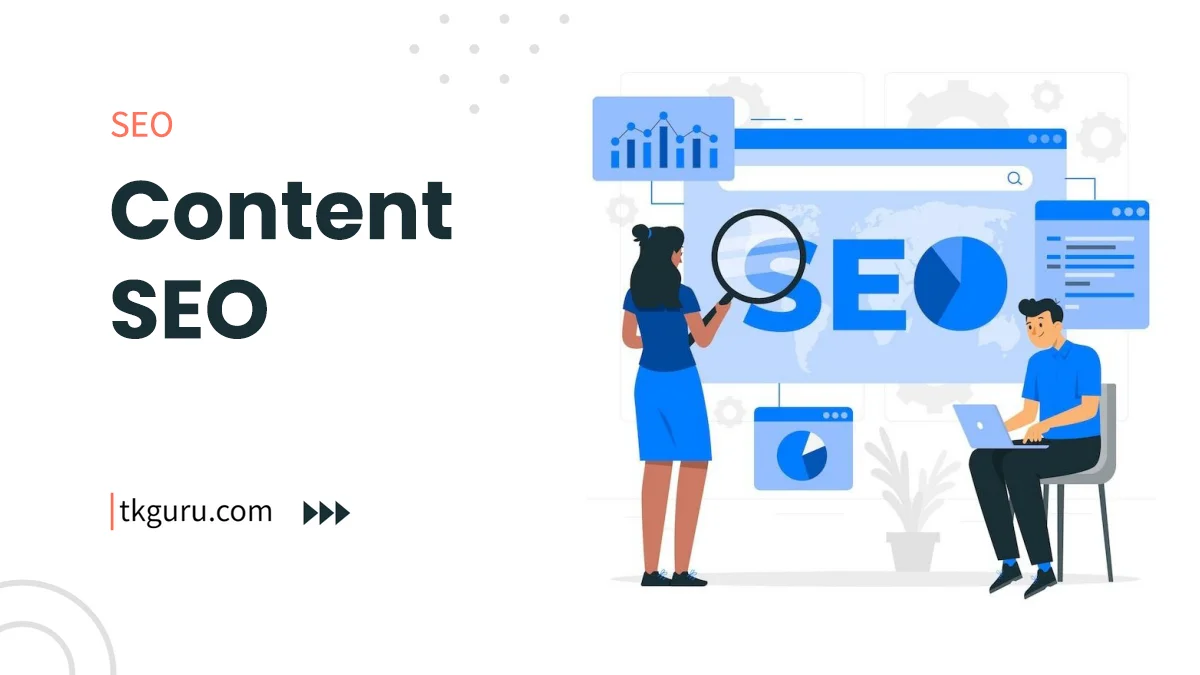
Content SEO – In the digital landscape, content is not just king—it’s the driving force behind online interactions, brand awareness, and customer engagement.
As businesses vie for attention and visibility in a crowded online world, the concept of Content SEO has become more critical than ever.
The fusion of compelling, informative content with search engine optimization (SEO) techniques creates a powerful tool for attracting organic traffic and establishing a strong online presence.
In this guide, we delve into the art of crafting high-quality, searchable content that not only resonates with your audience but also ranks prominently in search engine results.
From keyword research to on-page optimization, we explore the essential elements that contribute to the success of your content marketing efforts.
Contents
1. Understanding Content SEO
1.1 What is Content SEO?
Content SEO, or Search Engine Optimization, is a multifaceted approach to optimizing your website’s content to improve its visibility, relevance, and authority in search engine results.
It’s not just about stuffing articles with keywords; it’s about delivering value to users while ensuring search engines can understand and index your content effectively.
1.2 The Role of Content in SEO
Search engines are constantly evolving to deliver the most relevant and valuable results to users’ queries. Content plays a pivotal role in this process.
High-quality, informative, and engaging content not only answers users’ questions but also keeps them on your website longer.
This user engagement sends positive signals to search engines, indicating that your content is valuable and worth promoting.
2. Keyword Research and Strategy
2.1 Importance of Keyword Research
Effective content starts with understanding what your audience is searching for. Keyword research involves identifying the words and phrases users use to find information related to your industry or offerings.
Tools like Google Keyword Planner and SEMrush help uncover valuable insights into search volumes and keyword competition.
2.2 Long-Tail Keywords
Long-tail keywords consist of more specific phrases that target a niche audience. While they may have lower search volumes, they often have higher intent, leading to better conversion rates.
For instance, “best running shoes for beginners” is more specific and likely to attract users who are ready to make a purchase.
2.3 Keyword Strategy
Incorporating keywords naturally into your content is essential for SEO. However, it’s equally important to strike a balance between keyword usage and readability.
Keyword stuffing can harm user experience and lead to penalties from search engines. Craft content that addresses user intent while naturally integrating primary and secondary keywords.
Table 1: Keyword Strategy:
| Strategy | Description and Importance |
|---|---|
| Importance | Keywords guide your content towards user needs. |
| Long-Tail Keywords | Target specific queries with higher conversion potential. |
| Keyword Strategy | Integrate keywords naturally for optimal user experience and SEO. |
3. Crafting High-Quality Content
3.1 Valuable and Relevant Content
The foundation of content marketing lies in creating valuable and relevant content that addresses users’ needs.
Whether it’s informative articles, how-to guides, or in-depth analyses, your content should aim to offer solutions and insights that resonate with your audience.
3.2 Originality and Uniqueness
Standing out in a sea of digital content requires originality. Uniqueness doesn’t just mean rehashing existing information; it means offering fresh perspectives, data-driven insights, and innovative solutions that aren’t readily available elsewhere.
3.3 Readability and Formatting
User experience is paramount, and that includes readability. Break up your content into easily digestible sections using subheadings, bullet points, and short paragraphs.
This formatting not only enhances readability but also improves user engagement and the likelihood of social shares.
Table 2: Crafting High-Quality Content:
| Strategy | Description and Importance |
|---|---|
| Valuable Content | Create content that provides solutions and insights. |
| Originality | Offer fresh perspectives and unique insights. |
| Readability | Format content for enhanced readability and engagement. |
4. On-Page SEO Optimization
4.1 Title Tags and Meta Descriptions
Title tags and meta descriptions play a vital role in both user engagement and search engine optimization.
Crafting compelling and informative title tags encourages users to click through to your content, while well-written meta descriptions provide a concise preview of what users can expect from your page.
4.2 URL Structure
Clear and descriptive URLs contribute to a better user experience and improved search engine understanding.
A user-friendly URL not only provides context about the content but also includes primary keywords, aiding in SEO.
4.3 Header Tags (H1, H2, etc.)
Header tags (H1, H2, etc.) organize your content into a hierarchy that aids both users and search engines in understanding its structure.
The H1 tag serves as the main heading, while subsequent tags help break down content into sections and subtopics.
Table 3: On-Page SEO Optimization:
| Aspect | Description and Importance |
|---|---|
| Title Tags and Meta Descriptions | Craft compelling titles and descriptions for user engagement. |
| URL Structure | Use clear and descriptive URLs with relevant keywords. |
| Header Tags (H1, H2, etc.) | Organize content hierarchically for readability and SEO. |
5. Internal Linking
5.1 Benefits of Internal Linking
Internal linking connects different pages within your website, enhancing user navigation and providing additional context.
From an SEO perspective, internal links distribute link equity across pages and help search engines understand the relationships between different pieces of content.
5.2 Relevant Anchor Text
Using descriptive and relevant anchor text for internal links provides users with clear information about the linked content. It also aids search engines in determining the topic and relevance of the linked pages.
Table 4: Internal Linking:
| Aspect | Description and Importance |
|---|---|
| Benefits | Enhance user navigation and distribute link equity. |
| Relevant Anchor Text | Provide context and information about linked content. |
6. Mobile-Friendly and Responsive Content
6.1 Mobile SEO Importance
With mobile devices driving a significant portion of online traffic, optimizing your content for mobile is no longer optional.
Google’s mobile-first indexing means that your website’s mobile version is the primary basis for indexing and ranking.
6.2 Responsive Design
Responsive design ensures that your content adapts seamlessly to various screen sizes and orientations.
This flexibility not only improves user experience but also contributes to your site’s SEO performance.
Table 5: Mobile-Friendly and Responsive Content:
| Aspect | Description and Importance |
|---|---|
| Mobile SEO Importance | Optimize content for mobile to cater to mobile users. |
| Responsive Design | Ensure content adapts well to different screen sizes. |
7. Visual Content Optimization
7.1 Importance of Visual Content
Images, infographics, and videos not only enhance the visual appeal of your content but also improve engagement. Visual elements break up text, making content more digestible and shareable.
7.2 Image Optimization
Optimizing images is essential for faster loading times and better user experience. Properly optimized images include descriptive alt tags and are compressed to reduce file sizes without compromising quality.
Table 6: Visual Content Optimization:
| Aspect | Description and Importance |
|---|---|
| Importance | Visual elements enhance engagement and shareability. |
| Image Optimization | Optimize images for faster loading and user experience. |
8. Monitoring and Updating Content
8.1 Content Performance Tracking
Regularly monitoring content performance is essential to understand how your content is resonating with your audience.
Metrics like pageviews, bounce rates, and time on page offer insights into user engagement and behavior.
8.2 Content Refresh and Updates
Content doesn’t remain static. Periodically refreshing and updating content with new information, statistics, or insights keeps it relevant and appealing. This practice also signals to search engines that your content is current and valuable.
Table 7: Monitoring and Updating Content:
| Aspect | Description and Importance |
|---|---|
| Performance Tracking | Monitor user engagement and behavior with analytics. |
| Content Refresh | Update content periodically to maintain relevance. |
Conclusion
Crafting high-quality, searchable content is a blend of art and science. By understanding the principles of Content SEO and implementing strategies that focus on value, relevance, and user experience, you can create content that not only resonates with your audience but also ranks well in search engine results.
Remember, the journey to effective Content SEO is ongoing—continuous optimization, monitoring, and adaptation ensure that your content remains a valuable asset in the ever-evolving digital landscape.
Content SEO FAQs
What is content SEO?
Content SEO, also known as on-page SEO, involves optimizing the content on your website to improve its visibility and ranking in search engine results.
It includes optimizing elements like keywords, meta tags, headings, and overall content quality.
Why is content SEO important for my website?
Content SEO is crucial because it helps search engines understand the relevance of your content to user queries.
By optimizing your content, you increase the chances of your website appearing in search results when users search for relevant topics.
How can I optimize my content for SEO?
To optimize your content for SEO:
- Keyword Research: Identify relevant keywords that users might search for.
- Quality Content: Create informative, valuable, and well-structured content that answers user questions.
- Headings: Use clear headings and subheadings to organize your content.
- Meta Tags: Optimize meta title and description for each page to accurately describe its content.
- Internal Links: Include links to other relevant pages within your website.
- Image Optimization: Use descriptive file names and alt text for images.
- Mobile Friendliness: Ensure your content is responsive and displays well on mobile devices.
Can I use the same content on multiple pages without affecting SEO?
It's not recommended to duplicate content across multiple pages, as it can lead to issues with search engine rankings.
Search engines prefer unique and valuable content. If you need to reuse content, consider using canonical tags to indicate the original source.
Is there a specific content length I should aim for to rank better in search results?
There's no fixed content length that guarantees better rankings. Focus on providing comprehensive and valuable information that satisfies user intent.
Some topics may require longer content, while others can be effectively covered in shorter pieces.
Content SEO is essential for improving your website's search engine visibility and providing value to your audience.
By following best practices and creating high-quality, relevant content, you can enhance your website's chances of ranking higher in search engine results.
| Web Hosting | Website |
| WordPress | Google Adsense |
| SEO | Affiliate Marketing |
| Blogging | YouTube |
Recent Posts
- Top 6 SEO Companies in Ahmedabad 2024: Unlock Success with the Top SEO Companies in Ahmedabad
- Top 5 SEO Companies in Kanpur 2024: Discover the Top-Rated SEO Companies in Kanpur
- Quality vs Quantity: The Importance of High-Quality Backlinks
- E-A-T and SEO: Expertise, Authoritativeness, Trustworthiness
Related Tags
create powerful content that matters, quality content examples, quality content social media, high-quality content, how to create high-quality content on instagram, semrush good content title generator, when it comes to optimizing a new blog post, which parts of the content should be optimized?, semrush content marketing



